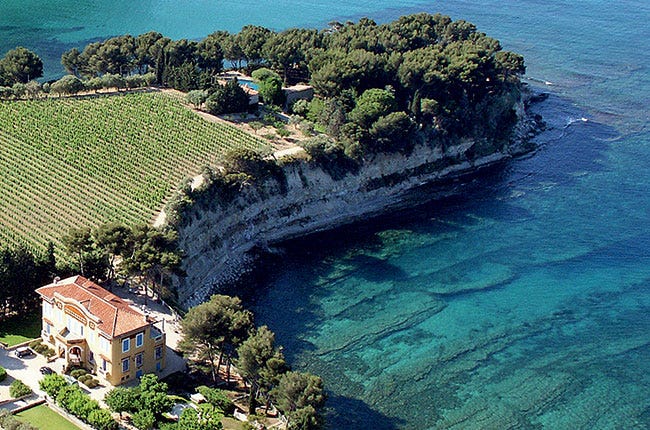Clos Sainte Magdeleine: Cassis Blanc
And yet Provence is known for its pink wine?
Originally published on my Substack September 28, 2020
Ask a semi-literate wine drinker what they think of when you say “Provençal wine” (I strongly recommend you don’t actually do this) and you will get one of two responses.
- “I don’t know” accompanied by a look which says “Why are you asking me this slurry r’d question you pretentious fool?”
- “Cheap, dry, uninspiring rosé for semi-ironic consumption in July or August.”
There will be no dewey-eyed soliloquy about the village of Bandol where world class reds from the likes of Domaine Tempier, Chateau Pradeux, or Domaine du Gros Noré could be had for under $60 if only you could find them on the shelves! Nor would anyone mention Provence’s true best kept secret: Cassis.
The village of Cassis can trace its winemaking pedigree to the Greek island of Phocaea who’s sailors founded the colony of Massalia (now Marseille) and planted the region’s first vines. They’ve been at it ever since though the dry, saline whites of today only date back to the 19th century. The tiny (215 hectares) region focuses on growing Marsanne, Ugni Blanc, Clairette, and Bourboulenc varietals giving the wines a closer kinship to Hermitage than Châteuneuf-du-Pape. Aside from being a world class appellation (since 1936, making it one of the oldest in France), the village looks straight photo-shopped, with azure waters lapping against chalky, vine-covered cliffs.

(Above: Close Sainte Magdeleine where the shadow of the dome of pleasure floats midway on the waves.)
But how doth the milk of paradise taste?
A sniff reveals a salty nose with faint traces of rosemary, thyme, anise, and a stronger aroma of peaches. There is an almost cloying fleshiness on the tongue which is somewhat surprising as this wine never touches an oak barrel (that would be the Marsanne having its day). There’s a savory minerality here that’s quite apart from the cleansing, stony flavors you get from Chablis - far more salt-forward, San Palagrino? Again, we get more peaches with a honeyed, yet utterly dry finish. It’s brilliant.
I’ve been lucky enough to drink some damned fine white Hermitage in my day which is admittedly a richer experience. However, most casual wine drinkers don’t like the stuff, it’s too esoteric, too chewy for the majority of palettes. White Cassis is far more approachable, packing elegance and complexity into something that can still be gulped on a hot day over some prawns.
At $40 a bottle, it costs slightly more per drink than having a pint in a decent bar and more than justifies what is pricy for white wine. Fortunately you won’t have to ruin yourself as it is incredibly difficult to come by. With less than 250 hectares under cultivation, only a tiny amount of Cassis makes it to North American shelves.
So, if you like white wine and wish to sip, close your eyes, and be transported from our autumnal storms (rain, snow, wind, fire, and political) to the sun-kissed shores of the unspoiled French Med, you know what to do.
Santé!